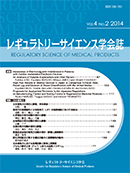This study aimed to provide a proposal for an efficient placebo-controlled fracture study design for the testing of new drugs targeted against primary osteoporosis, which also minimize the disadvantages for patients in the placebo group. We investigated 15 randomized placebo-controlled fracture studies using 11 products marketed in the United States, Europe, or Japan, previously described in medical journals. We particularly focused on the severity of osteoporosis in our fracture study cohort; we also created a new parameter “OSPC” (osteoporosis severity of patient cohort), which was calculated by multiplying the incidence of new vertebral fractures in the placebo group by 1,000 patients for each planned administration period. When the proportion of patients having≥1 prevalent vertebral fracture at baseline increased by approximately 90%, the number of patients in the placebo group of the study reduced by≤1,005 (r2=0.5475) and the OSPC increased by≥40, except for 1 study (r2=0.6008). The analysis of 15 fracture studies divided into 3 OSPC ranges (<40, 40-80, and≥80) showed that the number of patients in the placebo group was small and that the planned administration period was short when the patient cohort with a relatively high severity of osteoporosis (OSPC: ≥40) was enrolled in the fracture study, which was limited to the anti-new vertebral fracture effect. In addition, the number of patients in the placebo group with new vertebral fractures during the fracture study was small due to small number of patients in the placebo group and short study period. In conclusion, the efficacy of drug candidates for primary osteoporosis can be evaluated in a small sample size at a short period compared with the current standard study design, provided the incidence of new vertebral fractures is set as the primary endpoint and patients with prevalent vertebral fractures are included in the study. This study design may minimize the disadvantages for patients in the placebo group of the study and simplify the clinical development.
View full abstract
